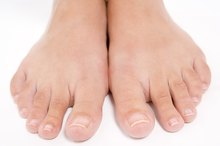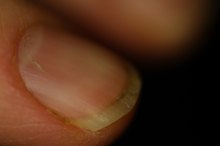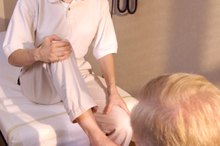What does fact checked mean?
At Healthfully, we strive to deliver objective content that is accurate and up-to-date. Our team periodically reviews articles in order to ensure content quality. The sources cited below consist of evidence from peer-reviewed journals, prominent medical organizations, academic associations, and government data.
- National Center for Biotechnology Information: Antibacterial Properties of Vinegar
- National Center for Biotechnology Information: Antibacterial Properties of Vinegar
- National Center for Biotechnology Information: Antifungal Activity of Tea Tree Oil
- National Center for Biotechnology Information: Antifungal Activity of Tea Tree Oil
The information contained on this site is for informational purposes only, and should not be used as a substitute for the advice of a professional health care provider. Please check with the appropriate physician regarding health questions and concerns. Although we strive to deliver accurate and up-to-date information, no guarantee to that effect is made.
How to Treat Fingernail Fungus
Fingernail fungus occurs when fungi or bacteria enter the nail bed 1. This can occur either through a crack or break in the cuticles or nail plate, or it could be the result of bacteria inside the body. Fingernail fungus is characterized by thick, yellow and cracked nail beds and can be embarrassing. There are steps you can take to cure a fingernail fungus, but the cure can take time. According to Dr. David Nelson, an orthopedic surgeon, it can take months before the fingernail fungus improves or disappears. There are prescriptions to treat fingernail fungus, but these come with high price tags and adverse side effects. There are several simple, at-home solutions for curing a fingernail fungus.
Purchase an over-the-counter cream with clotrimazole in it. Clotrimazole has antifungal properties that will destroy the fungus. Apply the cream to the affected nail. Rub it deeply into the cuticles, the top of the nail plate and as far under the nail bed as you can get it. Repeat this process, morning and night, until you see results. Clotrimazole treatment is a favorite of Dr. Nelson, and he recommends it to his patients suffering from fingernail fungus.
How to Get Rid of Thick Skin Under the Toenails
Learn More
Apply 100 percent pure tea tree oil to your nail with a cotton swab. Dip the cotton swab into the oil, and rub it along the cuticles and into and under the fingernail. Repeat this treatment three times a day until you see results. A study published in the Journal of Skin Pharmacology reports that tea tree oil has been found to have antifungal properties, and works well on various skin conditions.
Soak your affected fingernail in a mixture of two parts warm water to one part white vinegar. Place the vinegar and water in a bowl, and soak fingernail for 15 minutes. This soak should be done daily. If you find your skin becoming sensitive to, or irritated by, the white vinegar, cut the fingernail soak down to every other day and use one of the methods in Step 1 or 2 on your off day. The Journal of Food Protection published a report stating that white vinegar had higher antibacterial activity than other household agents.
How to Get Toenail Fungus to Grow Out
Learn More
Avoid wearing nail polish while you are treating your fingernail fungus. This will help speed the healing process, and allow the antifungal agent to work effectively.
Clean all of your nail tools while treating a fingernail fungus. Washing in warm, soapy water or with vinegar will help kill any bacteria or fungi that may be on the instruments.
Tips
Do not share nail tools while treating a nail fungus. After you have cured your fingernail fungus, continue to clean well around your nails to keep future infections away.
Warnings
See your doctor if you have diabetes and have discovered a nail fungus, as the healing process for diabetics requires supervision. If your nail fungus does not show signs of improvement within eight weeks, see your health care provider for proper diagnosis.
Related Articles
References
- National Center for Biotechnology Information: Antibacterial Properties of Vinegar
- National Center for Biotechnology Information: Antifungal Activity of Tea Tree Oil
- Shirwaikar AA, Thomas T, Shirwaikar A, Lobo R, Prabhu KS. Treatment of onychomycosis: an update. Indian J Pharm Sci. 2008;70(6):710-4. doi:10.4103/0250-474X.49088
- Syed TA, Qureshi ZA, Ali SM, Ahmad S, Ahmad SA. Treatment of toenail onychomycosis with 2% butenafine and 5% Melaleuca alternifolia (tea tree) oil in cream. Trop Med Int Health. 1999 Apr;4(4):284-7. doi:10.1046/j.1365-3156.1999.00396.x
- Buck DS, Nidorf DM, Addino JG. Comparison of two topical preparations for the treatment of onychomycosis: Melaleuca alternifolia (tea tree) oil and clotrimazole. J Fam Pract. 1994 Jun;38(6):601-5.
- Chee HY, Lee MH. Antifungal activity of clove essential oil and its volatile vapour against dermatophytic fungi. Mycobiology. 2007;35(4):241-3. doi:10.4489/MYCO.2007.35.4.241
- Gayoso CW, Lima EO, Oliveira VT, Pereira FO, Souza EL, Lima IO, Navarro DF. Sensitivity of fungi isolated from onychomycosis to Eugenia cariophyllata essential oil and eugenol. Fitoterapia. 2005 Mar;76(2):247-9. doi:10.1016/j.fitote.2004.12.005
- National Institutes of Health. "Fungal nail infection: MedlinePlus Medical Encyclopedia". June 2011.
Writer Bio
A certified nutritionist who majored in health, fitness and nutrition, Traci Vandermark has been writing articles in her specialty fields since 1998. Her articles have appeared both online and in print for publications such as Simple Abundance, "Catskill Country Magazine," "Birds and Blooms," "Cappers" and "Country Discoveries."








